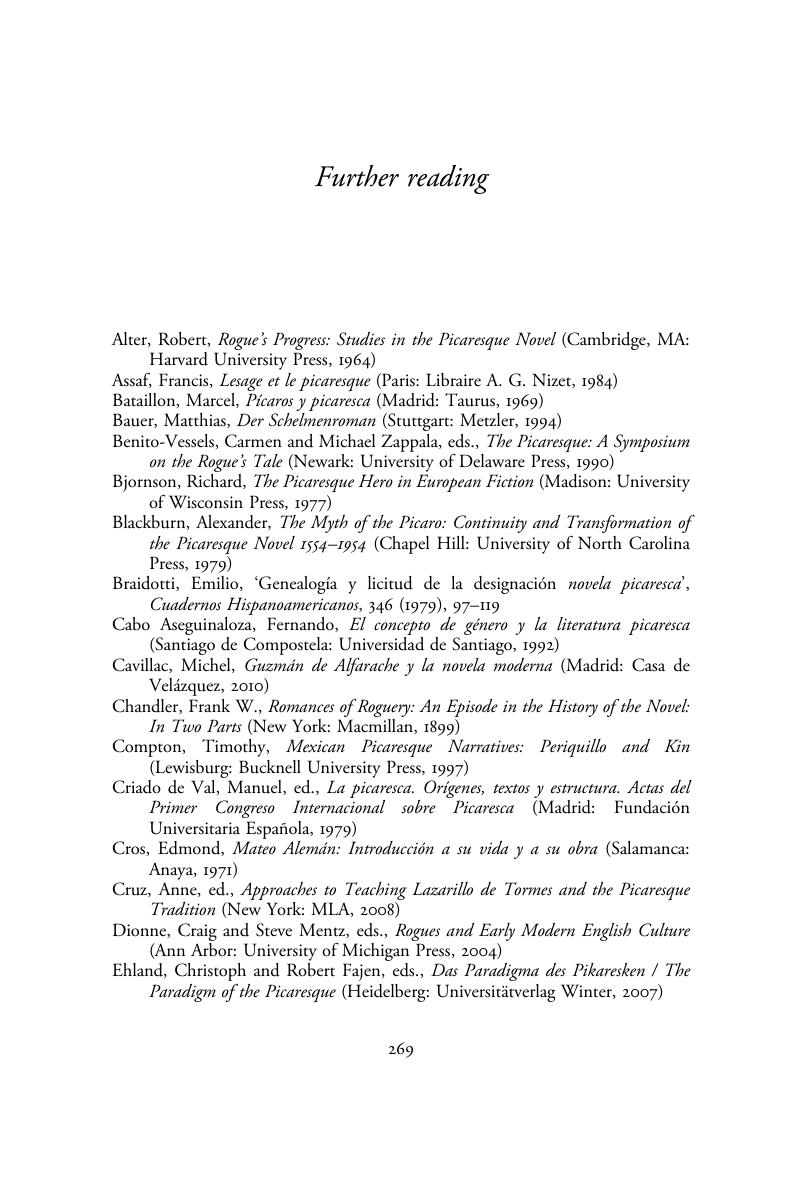Book contents
- The Picaresque Novel in Western Literature
- The Picaresque Novel in Western Literature
- Copyright page
- Contents
- Notes on contributors
- Chapter 1 Origins and definition of the picaresque genre
- Chapter 2 Lazarillo de Tormesand the dream of a world without poverty
- Chapter 3 Guzmán de Alfaracheand after
- Chapter 4 The Spanish female picaresque
- Chapter 5 The baroque picaro
- Chapter 6 Cervantes and the picaresque
- Chapter 7 The picaresque novel and the rise of the English novel
- Chapter 8 Defoe and the picaresque
- Chapter 9 Picaresque itineraries in the eighteenth-century French novel
- Chapter 10 The picaro as narrator, writer and reader
- Chapter 11 Russia: the picaresque repackaged
- Chapter 12 From epic to picaresque
- Chapter 13 The neopicaresque
- Further reading
- Index
- References
Further reading
Published online by Cambridge University Press: 05 June 2015
- The Picaresque Novel in Western Literature
- The Picaresque Novel in Western Literature
- Copyright page
- Contents
- Notes on contributors
- Chapter 1 Origins and definition of the picaresque genre
- Chapter 2 Lazarillo de Tormesand the dream of a world without poverty
- Chapter 3 Guzmán de Alfaracheand after
- Chapter 4 The Spanish female picaresque
- Chapter 5 The baroque picaro
- Chapter 6 Cervantes and the picaresque
- Chapter 7 The picaresque novel and the rise of the English novel
- Chapter 8 Defoe and the picaresque
- Chapter 9 Picaresque itineraries in the eighteenth-century French novel
- Chapter 10 The picaro as narrator, writer and reader
- Chapter 11 Russia: the picaresque repackaged
- Chapter 12 From epic to picaresque
- Chapter 13 The neopicaresque
- Further reading
- Index
- References
Summary

- Type
- Chapter
- Information
- The Picaresque Novel in Western LiteratureFrom the Sixteenth Century to the Neopicaresque, pp. 269 - 272Publisher: Cambridge University PressPrint publication year: 2015



